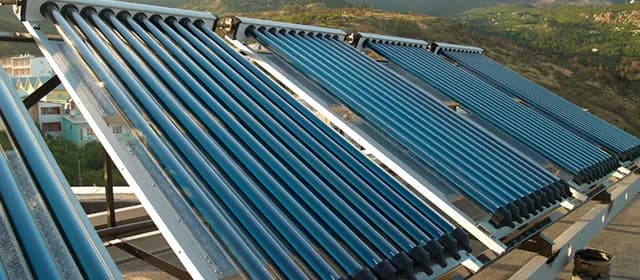Global supply chains have reached a tipping point. Countries are prioritizing control over semiconductor manufacturing capacity to ensure national security, economic resilience, and technological competitiveness. Foundries, once seen as back-end manufacturing infrastructure, have emerged as the cornerstone of this geopolitical recalibration.
Semiconductors are foundational to defense systems, telecommunications, artificial intelligence, and automotive innovation. Disruption in chip supply constrains strategic sectors and exposes economies to vulnerabilities that ripple across borders. Nations are accelerating efforts to localize or diversify semiconductor production to reduce reliance on foreign fabs.
Export restrictions, sanctions, and reshoring incentives are shifting the competitive landscape. The focus has moved from design-led control to manufacturing sovereignty. The fight to secure advanced foundry capacity is shaping trade, policy, and investment flows.
Foundries as Strategic Infrastructure: Control Over Capacity Equals Control Over Power
Control over chip production facilities is now tied directly to global influence. The location and capabilities of foundries dictate access to high-performance computing, energy systems, surveillance, and advanced manufacturing. Governments recognize that supply assurance is impossible without control over physical fabrication assets.
Only a few players dominate this space. TSMC manufactures approximately 92% of the world’s sub-7nm logic chips, consolidating control over advanced production in one geography. Replicating such capability elsewhere requires high capital and long gestation timelines.
Policy shifts reflect these realities. The U.S. CHIPS Act allocates $52.7 billion, including $39 billion specifically for fab construction. Europe has responded with an estimated €43 billion Chips Act, combining public and private capital to compete in advanced semiconductor production.
Asia’s Dominance and the Concentration Risk
Taiwan and South Korea dominate global advanced chip manufacturing. Taiwan Semiconductor Manufacturing Company (TSMC) alone controls over half of the global foundry market and nearly all advanced-node production. This centralization creates systemic exposure to geopolitical flashpoints.
Any disruption in the Taiwan Strait could freeze production of chips below 7nm, paralyzing global technology supply chains. As of 2024, TSMC held more than half of the advanced foundry market, followed by Samsung and Intel, underscoring the depth of the concentration.
Establishing foundries outside East Asia is technically feasible but economically and operationally complex. TSMC’s 3nm development alone costs an estimated $20 billion. Its Arizona fab is projected to cost $40 billion, making these ventures some of the most capital-intensive industrial investments globally.
Cost Structures, National Security, and State Involvement
Foundry development requires unprecedented public-private investment. Building a leading-edge fab includes cleanroom infrastructure, EUV lithography tools, and precision equipment. A single EUV lithography machine consumes around 1 megawatt of power, indicating the scale of resource intensity.
Semiconductor manufacturing intersects directly with national defense. Chips power everything from satellite systems to radar, missile guidance, and secure communication. Control over foundry capacity ensures uninterrupted access to secure and certified chips.
Japan has pledged $5.3 billion to support Rapidus in developing 2nm fabrication capability. China’s Big Fund Phase III, launched in May 2024, is backed by $47 billion in state-led financing. These figures reflect the strategic role foundries now play in defining technological futures.
Foundries vs Design: Shifting the Balance of Value
Fabless design companies like NVIDIA, AMD, and Qualcomm have historically dominated semiconductor value chains. Their control over chip architecture and design IP delivered massive scalability. That dynamic is shifting, as the ability to manufacture advanced chips has become the biggest bottleneck in the value chain.
Yield optimization, process precision, and packaging breakthroughs are now as decisive as architectural design. Foundries have shifted from contractors to collaborators. In the era of sub-5nm fabrication, manufacturing excellence determines who can deliver at scale.
Investor focus is shifting toward manufacturing capacity. Securing production slots at advanced nodes is now considered a strategic asset. Delays in the availability of AI chips, largely caused by bottlenecks in advanced packaging, have postponed data center deployments by six to twelve months. These delays underscore that control over production timelines has become a key source of competitive advantage.
Supply Chain Decoupling and Multi-Polar Foundry Strategies
The semiconductor industry is shifting from global integration to strategic segmentation. Policymakers are designing region-specific ecosystems that prioritize domestic production, IP protection, and industrial resilience.
The U.S., EU, Japan, China, and India are racing to build self-reliant semiconductor clusters. These strategies span from chip design and fabrication to packaging and testing. China, for example, peaked at more than $400 billion in annual semiconductor imports in 2022, a level that triggered its intensified push for supply chain independence.
Export controls have further accelerated decoupling. The U.S. imposed restrictions on 16/14nm logic, 18nm DRAM, and 128-layer NAND technologies in 2022. These curbs directly limit access to essential tools and IP, forcing countries to invest locally and diversify suppliers.
China’s Long Game and the Push for Self-Reliance
China's semiconductor strategy is rooted in long-term national goals. Local players like SMIC have attempted to advance to 7nm nodes using deep ultraviolet (DUV) equipment, despite being banded from acquiring EUV tools. For instance, Huawei’s Kirin 9000S uses SMIC’s improvised 7nm DUV process, highlighting the technical workarounds in play.
SMIC’s technological constraints stem from export bans on ASML's EUV machines. Without access to these tools, China remains two to three nodes behind global leaders. To close the gap, China launched Big Fund Phase III in May 2024, backed by $47 billion. The fund is directed toward building domestic capabilities across lithography, memory, materials, and packaging.
The New Metrics of Competitiveness: Yield, Scale, and Trust
Manufacturing excellence is now measured beyond cost and throughput. Trust, yield stability, and geopolitical alignment have become primary procurement metrics for large buyers and governments alike.
TSMC’s fabs in Taiwan consume 156,000 tons of water daily, accounting for 9% of the region’s water supply. The environmental intensity of advanced chip making is driving location decisions, particularly where governments must balance sustainability and industrial ambition.
Technology buyers now evaluate foundries based on geographic stability, regulatory compliance, and long-term access to power and water. Proven ability to maintain high-yield output across nodes gives foundries a lasting performance edge.
Talent Bottlenecks and Knowledge Asymmetry
Advanced node scaling relies on a deep bench of skilled engineers, process developers, and materials scientists. A chronic talent shortage is slowing ramp-up efforts even in countries that have secured funding and equipment.
Knowledge in semiconductor manufacturing is hard to replicate. Much of the operational know-how is tacit, developed over decades within legacy ecosystems. Transferring that to greenfield fabs in new geographies is proving time-consuming and error-prone.
Countries are responding by investing in workforce pipelines. The U.S. CHIPS Act includes provisions for education and training, while Japan and Europe have begun university-industry programs to accelerate skills development in semiconductor process engineering.
Conclusion: Silicon Sovereignty Will Redefine Global Economic Power
Control over advanced foundries now defines a nation’s ability to innovate, defend, and grow strategically. Nations are rethinking industrial policy, not just to enable access to chips, but to ensure secure control of their lifecycles.
Semiconductor manufacturing is no longer just about scale. It’s about yield, reliability, strategic alignment, and long-term access to the full stack, from raw materials and water to precision lithography and packaging IP.
Foundries have become geopolitical levers. The cost of losing access, estimated at $210 billion during the 2021 auto industry chip shortage, demonstrates that control is not optional. Foundries are the new oil rigs, and whoever controls them will shape the next era of economic and technological power.



